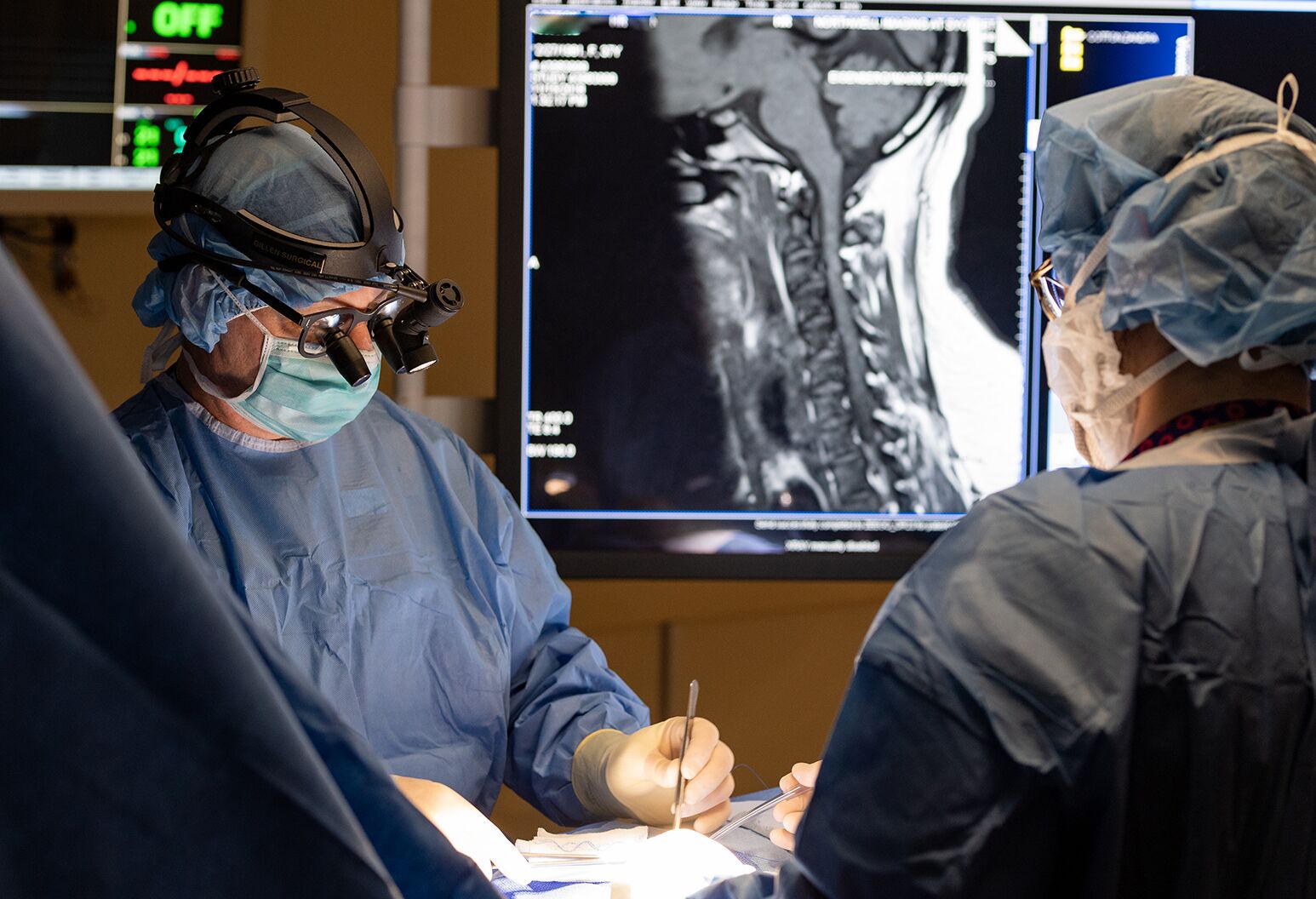How to Get ready for Visits to the Best Spine Surgeons in St Louis MO
How to Get ready for Visits to the Best Spine Surgeons in St Louis MO
Blog Article
A Review of Spine Conditions That Usually Lead To Surgical Treatments
Spinal column problems such as herniated discs, spinal stenosis, and degenerative disc illness regularly necessitate surgical treatments when traditional therapies fail to alleviate consistent signs and symptoms. These conditions not just cause significant discomfort yet can additionally drastically impair daily functioning and total quality of life. Comprehending the subtleties of each condition and the corresponding surgical alternatives, such as discectomy or spinal blend, is critical for efficient monitoring. As we explore these conditions additionally, it comes to be obvious that the decision-making process bordering medical therapy is diverse and warrants careful consideration.
Herniated Discs
Although several individuals with herniated discs may discover relief with conventional treatments, surgical procedure ends up being an essential factor to consider when symptoms persist or worsen - best spine surgeons in st louis mo. A herniated disc takes place when the soft inner gel of a spinal disc protrudes with its external layer, possibly compressing nearby nerves and leading to pain, numbness, or weak point in the extremities
Conservative monitoring generally consists of physical therapy, pain medicines, and corticosteroid shots, which intend to reduce inflammation and boost function. However, in situations where these methods fail to alleviate debilitating signs and symptoms, medical options might be discovered.
The most usual operation for herniated discs is a discectomy, which involves the elimination of the herniated section of the disc to soothe pressure on the influenced nerve origin. In much more extreme cases, spine fusion may be needed to support the influenced vertebrae.
Clients are encouraged to talk about the potential dangers and advantages of surgical treatment with their doctor to make an educated decision. Eventually, the goal of any type of surgical intervention is to bring back feature, reduce discomfort, and improve general top quality of life for individuals struggling with herniated discs.
Back Stenosis
Spinal stenosis happens when the areas within the spinal column slim, bring about enhanced pressure on the back cord and nerves. This condition can create in numerous regions of the spinal column, consisting of the back and cervical locations, often due to age-related changes, such as degenerative disc disease, joint inflammation, or thickening of ligaments.
Patients with spinal stenosis may provide with signs that include pain, feeling numb, tingling, or weak point, mainly in the legs or arms. These symptoms can be aggravated by activities that involve standing or strolling, commonly leading people to look for relief through conservative treatments like physical therapy, medications, or epidural steroid injections.
Nevertheless, when these non-surgical interventions stop working to give appropriate alleviation, surgical alternatives may be thought about. Typical surgical procedures for back constriction include laminectomy, which involves the removal of component of the vertebra to relieve pressure, and spinal combination, which supports the damaged area.
Spondylolisthesis
Spondylolisthesis happens when one vertebra slides ahead over another, leading to misalignment of the back. This problem can arise from various elements, including hereditary problems, injury, or degenerative modifications in the back. It is most frequently observed in the lumbar region, especially at the L4-L5 and L5-S1 levels.

When non-surgical strategies stop working to alleviate symptoms or when significant nerve compression is existing, surgical treatment might be warranted. Surgical options can include spinal fusion or decompression treatments, aimed at recovering placement and reducing neurological signs.
Degenerative Disc Condition

Individuals with DDD commonly experience pain that might radiate to the legs or arms, depending on the impacted area of the back. The problem can be diagnosed through a combination of scientific assessment, imaging researches, and patient background. Therapy options commonly start with conservative measures, consisting of physical therapy, pain administration, and way of life adjustments. When these strategies fail to offer adequate alleviation, medical treatments may be thought about.
Surgical options for DDD might include spine combination or artificial disc replacement, intended at stabilizing the impacted sector and alleviating pain (best spine surgeons in st louis mo). Eventually, the choice of treatment is individualized, taking into consideration the severity of the condition, person health and wellness, and lifestyle aspects
Spinal Lumps

Back growths can occur from numerous factors, consisting of genetic predisposition, ecological influences, and pre-existing clinical conditions. Patients may offer with a variety of symptoms, consisting of localized discomfort, neurological shortages, weakness, or modifications in bowel and bladder feature, depending Click This Link on the lump's size and location.
Surgical treatment may be required to relieve signs and symptoms, get a biopsy, or eliminate the lump completely. The objective of surgery is frequently to decompress neural aspects and maintain the back. Early discovery and intervention are crucial for optimizing outcomes in clients with back lumps.
Final Thought
In summary, spine problems such as herniated discs, spinal constriction, spondylolisthesis, degenerative disc illness, and spinal growths frequently necessitate medical intervention because of their potential to cause significant pain and useful problems. While conventional therapies may offer short-lived alleviation, surgical alternatives come to be important when signs and symptoms linger or get worse. Timely medical diagnosis and intervention play an essential duty in recovering function and boosting the quality of life for damaged individuals, highlighting the relevance of thorough back care.

Report this page